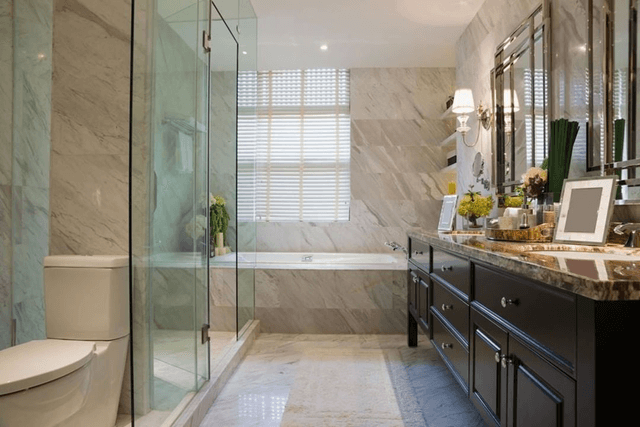Choosing the right colors for your home decor is essential in creating a space that truly reflects your style and sets the desired mood and atmosphere. Understanding the power of colors plays a vital role in achieving this.
Colors have the ability to influence our emotions, well-being, and even impact how we perceive a space. In this article, we will explore the importance of colors in home decor and delve into the psychological impact of different colors on our emotions.
When it comes to choosing colors for your home decor, it’s important to assess your personal style and preferences. Your personal taste, lifestyle, and desired ambiance all play a significant role in determining which color palette will enhance or complement your space. Identifying your personal style, whether it’s modern, traditional, rustic, or any other aesthetic, will help you determine the right color scheme that aligns with your vision.
To make informed decisions about color choices, it’s helpful to understand some basic principles of color theory. This includes terms such as hue, saturation, brightness, and primary, secondary, and tertiary colors. Exploring the color wheel and learning how to create harmonious combinations through complementary or analogous colors can help you establish a cohesive look throughout your home.
By considering natural lighting factors and how they affect color perception, you can make smarter choices regarding color selection for each room. Additionally, understanding artificial light temperatures and how they impact colors can ensure that your chosen hues appear as intended in different lighting conditions.
Ultimately, choosing colors for home decor is about bringing your own vision to life. By following a step-by-step process of assessing personal style, exploring color theory basics, creating a cohesive color scheme while considering existing decor and furniture elements, testing and sampling colors diligently before finalizing choices – you will be able to create an aesthetically pleasing space that evokes the desired emotional response.
It’s time to unleash your creativity and let colors transform your living environment into something truly extraordinary.
Assessing Your Personal Style and Preferences
When it comes to choosing colors for home decor, one of the first steps to consider is assessing your personal style and preferences. Understanding your unique taste and the overall aesthetic you want to achieve will help guide you in selecting the most suitable color palette for your space.
Start by identifying your personal style, whether it leans towards modern, traditional, rustic, or any other design aesthetic. This will serve as a foundation for choosing colors that enhance or complement your chosen style. For example, if you lean towards a minimalist modern style, you may opt for a neutral color palette with clean lines and simple silhouettes. On the other hand, if your style is more eclectic and vibrant, you might choose a bold and colorful palette.
Consider factors such as personal taste, lifestyle, and desired ambiance when assessing your preferences. Think about how certain colors make you feel or what mood you want to create in each space. Do you prefer soft and calming hues that promote relaxation?
Or do you gravitate towards energizing shades that add vibrancy to a room? Keep in mind that colors have a psychological impact on emotions and well-being. By aligning your color choices with your personal style and desired atmosphere, you can ensure that your home decor reflects who you are while creating spaces that truly resonate with you.
Once you have a clear understanding of your personal style and preferences, it becomes easier to make informed decisions about the color scheme of your home decor. Whether you choose bold palettes or subtle tones, incorporating colors that resonate with you will create a space that feels uniquely yours.
So take the time to assess your personal style and preferences before diving into the world of color selection – it will be worth it in creating a home that truly reflects who you are.
Exploring Color Theory and Basics
When it comes to choosing colors for your home decor, understanding the basics of color theory is essential. Color theory refers to the principles and concepts that govern how colors work together harmoniously. By grasping these fundamentals, you can confidently create a visually appealing and cohesive color scheme throughout your space.
One important aspect of color theory is understanding the different elements of color: hue, saturation, and brightness. The hue refers to the actual color itself, such as blue or red. Saturation refers to the intensity or purity of a color, where high saturation represents a bold and vibrant color while low saturation represents a more muted or pastel shade. Brightness, on the other hand, refers to how light or dark a color appears.
To effectively combine colors in your home decor, it’s crucial to be familiar with the color wheel. The color wheel is a visual representation of all hues and their relationships with one another.
It consists of primary colors (red, blue, and yellow), secondary colors (orange, green, and purple), and tertiary colors (created by mixing primary and secondary colors). By understanding the positions of different colors on the wheel, you can easily identify complementary (opposite) colors that create contrast or analogous (adjacent) colors that create harmony.
Once you have a grasp on these basic principles, you can start exploring different ways to apply them in your home decor. You may choose to use a dominant color as the main theme throughout your entire home or select specific palettes for individual rooms based on their desired atmosphere.
By selecting complementary hues that are opposite each other on the color wheel or analogous shades next to each other on the wheel, you can create a visually pleasing and balanced space.
Incorporating an understanding of color theory into your decision-making process when choosing colors for your home decor will help you make thoughtful choices that result in an aesthetically pleasing environment. Experimenting with different color combinations and considering the emotional effects of colors will allow you to create rooms that not only look great but also evoke the desired mood and energy levels.
Creating a Cohesive Color Scheme
When it comes to home decor, a cohesive color scheme is essential for creating a harmonious and visually appealing space. A well-thought-out color palette can tie different rooms together and create a sense of flow throughout your home. In this section, we will explore some techniques and considerations for creating a cohesive color scheme that reflects your personal style and enhances the overall ambiance of your space.
Choosing a Dominant Color:
Start by selecting a dominant color that will set the tone for your entire home or specific rooms. Consider factors such as the size of the room, natural lighting conditions, and the mood you want to create. Neutral colors like beige, gray, or white are popular choices as they provide a versatile base that can be complemented with other hues. If you prefer bolder shades, choose one that speaks to you and resonates with your personal taste.
Complementary Hues:
Once you have chosen your dominant color, it’s time to select complementary hues. These colors will work alongside the dominant shade to create visual interest and balance in your space. One approach is to use an analogous color scheme which involves using colors that are adjacent to each other on the color wheel.
This creates a harmonious combination that is pleasant to the eye. Another option is to opt for contrasting colors, such as pairing warm tones with cool tones or using complementary colors from opposite sides of the color wheel.
Techniques for Visual Flow:
To ensure visual flow throughout your home, consider using color in varying intensities and shades within your chosen palette. This can help create depth and dimension in each room while maintaining cohesiveness with the rest of your space. Additionally, pay attention to how colors transition from one room to another. Using elements like accent walls, rugs, or artwork can help bridge different spaces together and maintain continuity.
By carefully selecting a dominant color, choosing complementary hues, and employing techniques for visual flow, you can create a cohesive color scheme that ties together your home decor and reflects your personal style. Remember, experimenting with colors can be a fun and creative process, so trust your instincts and don’t be afraid to play around with different combinations until you find the perfect palette for your space.
Considering Natural and Artificial Lighting Factors
One crucial factor to consider when choosing colors for home decor is the lighting in your space. Both natural and artificial lighting can significantly impact the perception and selection of colors, making it essential to take these factors into account during the decision-making process.
The Impact of Natural Light on Color Perception
Natural light has a profound effect on how we perceive colors. The intensity and direction of sunlight can alter the appearance of colors, leading to variations throughout the day. It’s important to consider which rooms receive ample natural light, as this can affect the overall ambiance and atmosphere created by your chosen color palette.
Rooms that receive an abundance of direct sunlight can benefit from cooler tones such as blues and greens, which help balance out the warmth of sunlight. On the other hand, rooms with limited natural light may require warmer colors like yellows or oranges to create a cozy and inviting atmosphere.
Adjusting Colors for Room Orientations and Lighting Conditions
The orientation of a room also plays a role in how lighting affects color perception. North-facing rooms typically receive less natural light and tend to have cooler temperatures. To counteract this, you might consider using warm colors or adding artificial lighting sources to brighten up the space. Conversely, south-facing rooms generally have more natural light coming in throughout the day, so you may want to opt for cooler shades to avoid an overly sunny feel.
Additionally, it’s important to be aware of any artificial lighting present in your space. Different types of bulbs emit different temperatures of light, ranging from warm tones (yellowish) to cool tones (bluish). These temperatures can influence how colors appear in your room, so it’s helpful to test different color samples under both natural and artificial lighting conditions before making final decisions.
Considering these natural and artificial lighting factors will ensure that your chosen color schemes are fully optimized for your home’s unique lighting conditions.
Harmonizing Colors with Existing Décor and Furniture
In order to create a cohesive and visually appealing home decor, it is essential to harmonize the colors with existing decor and furniture. Assessing your current furniture and decor pieces is the first step in this process. Take a look at the colors, patterns, and styles of your furniture and decor items to determine how they can be incorporated into your overall color scheme.
One tip for harmonizing colors is to choose colors that complement existing elements. Look for colors that are already present in your furniture or decor pieces and use them as inspiration for your color palette. For example, if you have a bold red couch, you can use shades of red or complementary colors like greens or blues to create a harmonious color scheme.
Another important aspect to consider when harmonizing colors is balancing bold and neutral shades. If you have furniture or decor items that are quite vibrant or eye-catching, it is important to balance them out with more neutral colors. Neutral shades such as whites, greys, and beige can act as a base for the room and allow other elements to stand out.
To visually bring everything together, consider creating focal points within the space using color. You can do this by incorporating pops of color through accent pillows, throws, artwork, or even a statement piece of furniture. By strategically placing these elements throughout the room, you can create visual flow and balance.
It’s important to remember that achieving harmony in home decor takes time and experimentation. Don’t be afraid to try different color combinations and make adjustments as needed. Trust your instincts and let your personal style shine through in your choices.
Harmonizing Colors with Existing Decor and Furniture
| Tips | Data |
|---|---|
| Assess current furniture and decor pieces | Take note of existing colors, patterns, and styles |
| Choose colors that complement existing elements | Look for colors already present in furniture or decor items |
| Balance bold and neutral shades | Incorporate neutral colors to balance out vibrant elements |
| Create focal points with color | Use accent pieces strategically to create visual flow and balance |
| Trust your instincts and experiment | Try different color combinations until you achieve harmony |
Understanding the Emotional Effects of Different Colors
The colors we choose for our home decor can have a profound impact on our emotions and the overall atmosphere of a space. Understanding the emotional effects of different colors is crucial when selecting the perfect palette for each room. By utilizing color psychology, homeowners can create desired atmospheres and enhance the overall mood and energy levels throughout their living spaces.
One popular color to consider is blue, known for its calming and soothing effects. Blue is often associated with tranquility, making it an excellent choice for bedrooms or relaxation areas such as living rooms or bathrooms. Incorporating shades of blue into these spaces can promote feelings of peace, serenity, and relaxation.
On the other hand, if you’re looking to energize and invigorate a particular room, consider incorporating shades of red or orange. These warm colors are known for their ability to stimulate appetite and conversation, making them suitable options for dining rooms or kitchen areas where social gatherings typically take place. However, it’s essential to strike the right balance with these bold colors to avoid overwhelming the space.
For those seeking a sense of clarity or focus in their home office or workspace, green may be the ideal choice. Green is associated with balance and harmony and has been shown to promote concentration and productivity. Adding touches of green through plants or accent decor pieces can help create an environment that fosters creativity and focus.
Incorporating an understanding of color psychology into your home decor allows you to intentionally design spaces that evoke certain emotions and support specific activities. By pinpointing the emotional effects of different colors, you can create rooms tailored to your needs and desires while ensuring a harmonious overall ambiance throughout your home.
Examples
- Incorporate shades of blue in bedrooms or relaxation areas
- Add touches of red or orange in dining rooms or kitchen areas
- Introduce green elements in home offices or workspaces
Testing and Sampling Colors
When it comes to choosing colors for your home decor, it’s important to test and sample different options before making a final decision. This step allows you to see how the colors will look in your space and ensure that they create the desired atmosphere. Testing and sampling colors can be done through various methods, such as using color swatches, paint samples, and digital tools.
One way to test colors is by using color swatches. These are small cards or strips of color that you can hold up against your walls or furniture to get an idea of how the color will look in your space. Color swatches are often available at home improvement stores or can be ordered online from paint manufacturers. It’s important to view the swatches in different lighting conditions throughout the day to see how they may change.
Paint samples are another great option for testing colors. Many paint manufacturers offer sample sized cans or jars of paint that you can apply directly onto your walls or other surfaces.
This allows you to see how the color looks once it’s applied and how it interacts with the existing elements in your space. It’s recommended to paint a small area rather than just applying a single brushstroke, as this will give you a better sense of how the color will look overall.
Digital tools have also become increasingly popular for testing and sampling colors. There are numerous apps and online platforms that allow you to virtually visualize different color schemes in your space.
Some even let you upload photos of your room, so you can see exactly how a certain color will look on your walls or furniture. While these digital tools provide a convenient option for testing colors, it’s still advisable to supplement them with physical samples to get a more accurate representation.
| Methods for Testing Colors | Description |
|---|---|
| Color swatches | Small cards or strips of color that can be held up against walls or furniture to preview how the color will look in the space. |
| Paint samples | Sample-sized cans or jars of paint that can be directly applied onto surfaces to see how the color looks once it’s applied and interacts with existing elements. |
| Digital tools | Apps and online platforms that allow for virtual visualization of different color schemes in a space. Some tools even let users upload photos to see exactly how a certain color will look on walls or furniture. |
Conclusion
In conclusion, choosing colors for home decor is an important process that can greatly impact the atmosphere and mood of a space. By understanding the power of colors and their psychological effects, homeowners can create a personalized and appealing environment that reflects their personal style and preferences.
Assessing your personal style and considering factors such as taste, lifestyle, and desired ambiance is crucial in selecting colors that enhance or complement your style. It is also essential to have a basic understanding of color theory, including the principles of hue, saturation, brightness, and the role of the color wheel in creating harmonious combinations.
Creating a cohesive color scheme involves establishing a dominant color and choosing complementary hues. Techniques such as visual flow and balance can also be used to create an aesthetically pleasing space. Additionally, considering natural and artificial lighting factors is important in adjusting color choices based on room orientations and lighting conditions.
Harmonizing colors with existing decor and furniture pieces is another key aspect of choosing colors for home decor. By assessing current elements in the space, homeowners can incorporate colors that complement existing pieces while balancing bold and neutral shades.
Understanding the emotional effects of different colors allows homeowners to utilize color psychology to create desired atmospheres in different rooms. Soothing colors can be applied to bedrooms to promote relaxation, while energizing colors work well in workspaces to boost productivity.
Lastly, testing and sampling colors using swatches, paint samples, and digital tools is recommended to preview color schemes. It is important to test colors in different lighting conditions to ensure they look desirable throughout the day.
Frequently Asked Questions
What is the color rule for home decor?
The color rule for home decor is that there are no strict rules. While certain color theories and guidelines exist, such as complementary or analogous colors, there is no one-size-fits-all approach. Ultimately, the color scheme for a home should reflect the individual’s personal taste and style.
Experimentation is encouraged to create a harmonious and aesthetically pleasing space. It is important to consider factors like lighting, room size, existing furniture, and desired mood when selecting colors for home decor.
What is the 3 color rule in interior design?
The 3 color rule in interior design suggests that a well-balanced color palette can be created by using three main colors in a room. This rule helps to create visual interest and cohesion while preventing the space from feeling overwhelming or chaotic.
The three colors generally consist of a dominant color (used in approximately 60% of the room), a secondary color (used in around 30% of the room), and an accent color (used in approximately 10% of the room). By adhering to this guideline, one can create a sense of harmony and balance within their interior design.
How do I choose a color scheme for my living room?
When choosing a color scheme for your living room, it is essential to consider various factors to ensure it aligns with your desired atmosphere and personal preferences. Start by determining the mood you want to evoke in the space – whether it’s calm and serene or vibrant and energetic. Consider the amount of natural light that enters the room as it can impact how colors appear throughout the day.
Also, take into account existing furniture or patterns you wish to incorporate into your color scheme or work around them if you don’t plan on changing them. Look at samples such as paint swatches, fabrics, or photographs to get an idea of how different colors may interact with each other in your living room’s specific lighting conditions before making a final decision on your color scheme.

I’m thrilled to be your companion on this exciting journey through the world of home decor and design. With a passion for turning houses into homes and a keen eye for the finer details, I’m here to help you transform your living spaces into beautiful, functional, and meaningful havens.





